This Puzzling Dessert Calls for Peaches and Physics
There’s a magic trick baked into Peach Puzzle.
THIS ARTICLE IS ADAPTED FROM A SPECIAL EDITION OF THE JUNE 30, 2021, GASTRO OBSCURA NEWSLETTER.
There is a category of foods I love that I call “novelty desserts.” They typically feature a secret, improbable ingredient, like mayonnaise in cake batter or the vinegar in vinegar pies. Others feel like magic tricks, as in the case of hot-fudge cake, where a thick layer of chocolate sauce forms on the bottom of the pan during baking.
The heyday of these desserts was the mid-1900s, during the rise of convenience foods and new appliances in American kitchens. Armed with boxed, canned, and frozen foods, cooks and companies alike mixed up improbable combinations with the passion of mad scientists.
For a few heady decades, nothing was off-limits. Sauerkraut? Put it in the chocolate cake. Leftovers? Suspend them in gelatin—it’s a salad now. Improbably perfect round loops of canned pineapple? Put them on everything.
This era of experimentation eventually petered out, and many of these recipes now inspire horror from cooks who hate processed foods and love all things “natural.”

But they had a lot to offer, providing fancy flourishes from inexpensive ingredients, making formerly tropical or international foods available even in the deepest Midwest, or demonstrating impressive feats of chemistry and physics. And many of these creations—like the Midwest’s endearing Jell-O salads—are still beloved today. But there’s one novelty dessert that absolutely entrances me. The specialty of a single Ohio family, it can only be made during prime peach season.
In 2006, Cook’s Country magazine asked subscribers to send in their best “lost” recipes. The goal was to identify heirloom recipes marooned in time and overlooked by cookbooks. Think Mile High Bologna Pie and, yes, sauerkraut cake.
Lois Schlademan of Stow, Ohio, came home one day to a message on her answering machine. Her entry, a fruity dessert called Peach Puzzle, had netted her the grand prize. Her Peach Puzzle doesn’t rely on shocking ingredients or food coloring for its novelty. Instead, heat and physics make this treat magical.
The ingredients are simple: peaches sweetened with brown sugar syrup, but baked around an upside-down ramekin, all under a light crust. Bakers might anticipate a mess of syrup and porcelain when it comes time to serve, but Peach Puzzle puts itself together. After it’s taken out of the oven, the cooling process naturally forces the syrup inside the ramekin. With a quick flip onto a plate, you’re serving up a wreath of roasted peaches, with a convenient cup of sauce for drizzling at the center. As Cook’s Country declared in their 2007 book America’s Best Lost Recipes, “Lois’s recipe is unique—in our research, we failed to come across a single recipe like it.”
Schlademan didn’t develop the recipe herself—she still has a faded clipping from the Buffalo Evening News that her mother sent her with the original recipe, printed more than 70 years ago. For some reason, though, Peach Puzzle never made it past the Schlademans.
Schlademan’s recipe is actually a bit different from the one printed by Cook’s Country: She uses shortening instead of butter for the biscuit dough. And she’s a little appalled by my tweak of removing the peach pits. But she shrugs it off. The only essentials for this dessert, she says, are good peaches.
One recent Peach Puzzle attempt, she adds, ended in failure. “I couldn’t even get the skin off those peaches,” she complains. “And they were from Georgia. So I guess I’ll have to wait for Ohio peaches to come in.”

Peach Puzzle
Adapted from Lois Schlademan’s winning recipe
Makes 7 servings
Ingredients
For the sauce:
¾ cup brown sugar, packed
2 tablespoons unsalted butter
½ teaspoon vanilla
⅛ teaspoon salt
½ cup juice from the peaches (see directions)
For the biscuit dough:
1¼ cups all-purpose flour
1 tablespoon baking powder
2 tablespoons granulated sugar
¼ teaspoon salt
5 tablespoons cold unsalted butter
6 tablespoons milk
You’ll also need:
7 ripe but not soft peaches
Directions
1. First, peel the peaches. Set a large pot of water on the stove. When it boils, carefully lower in the peaches, three or four at a time. Keep a careful eye on the bobbing peaches, because in a few seconds, their skin will start to visibly shred. Once that happens, remove all the peaches and let them cool until they’re comfortable to handle. The skins should slip off easily.
2. Get out a large bowl and a small spoon, the pointier the better. Pit the peaches within the bowl to catch the juice. When digging the spoon into one end to extract the stones, try to keep the peaches as intact as possible.
3. Wash your sticky hands! Then, get out a 9-inch pie pan. Arrange the peaches around the edge, with the holes facing up.

4. Time to start the sauce. Measure your collected peach juice, and if it doesn’t come out to half a cup, add water until it does. Then pour it into a saucepan and add the rest of the sauce ingredients. Cook the sauce at medium heat until the butter is melted and the sugar is completely dissolved, for about 5 minutes.
5. Take the sauce off the heat and set it aside. Preheat the oven to 400°F.
6. While the oven heats, start preparing the biscuit dough by whisking together the dry ingredients in a large bowl. With an electric mixer or a pastry cutter, chop in the butter until the mixture looks like fine, sandy crumbs. With a rubber spatula or spoon, add in the milk and mix until the dough is a smooth paste.
7. Get a sheet of wax paper and set the dough in the center. With wet fingertips, smooth the dough into a large circle about 10 inches in diameter.
8. Next, assemble the Peach Puzzle. Pour the sauce into the empty space at the center of the pie plate. Then, take a ramekin or a small bowl and place it atop of the sauce, but with the flat bottom of the ramekin facing upwards.

9. Next, carefully drape the dough over the peaches, taking care not to rip the circle when peeling away the wax paper. While the pastry should reach the edge of the pie plate, do not crimp the dough onto the rim like you would for a pie. Leave it loose. Then, set the Peach Puzzle on a lined baking sheet, just in case it drips in the oven.
10. Bake the peach puzzle for 25 minutes, until the top is a crisp golden brown. Then, let it cool for at least another 20 minutes, or until the bottom is warm but not hot to the touch.
11. Now for the fun part. Pick out your serving platter for the peach puzzle, making sure it’s a little larger than the pie plate. Set the platter on top of the peach puzzle, then smoothly flip it over.
12. Most of the sauce will have stayed in the ramekin! The Peach Puzzle is now ready to eat, preferably while it’s still warm. Every serving can be drizzled with the sauce.
Gastro Obscura covers the world’s most wondrous food and drink.
Sign up for our regular newsletter.



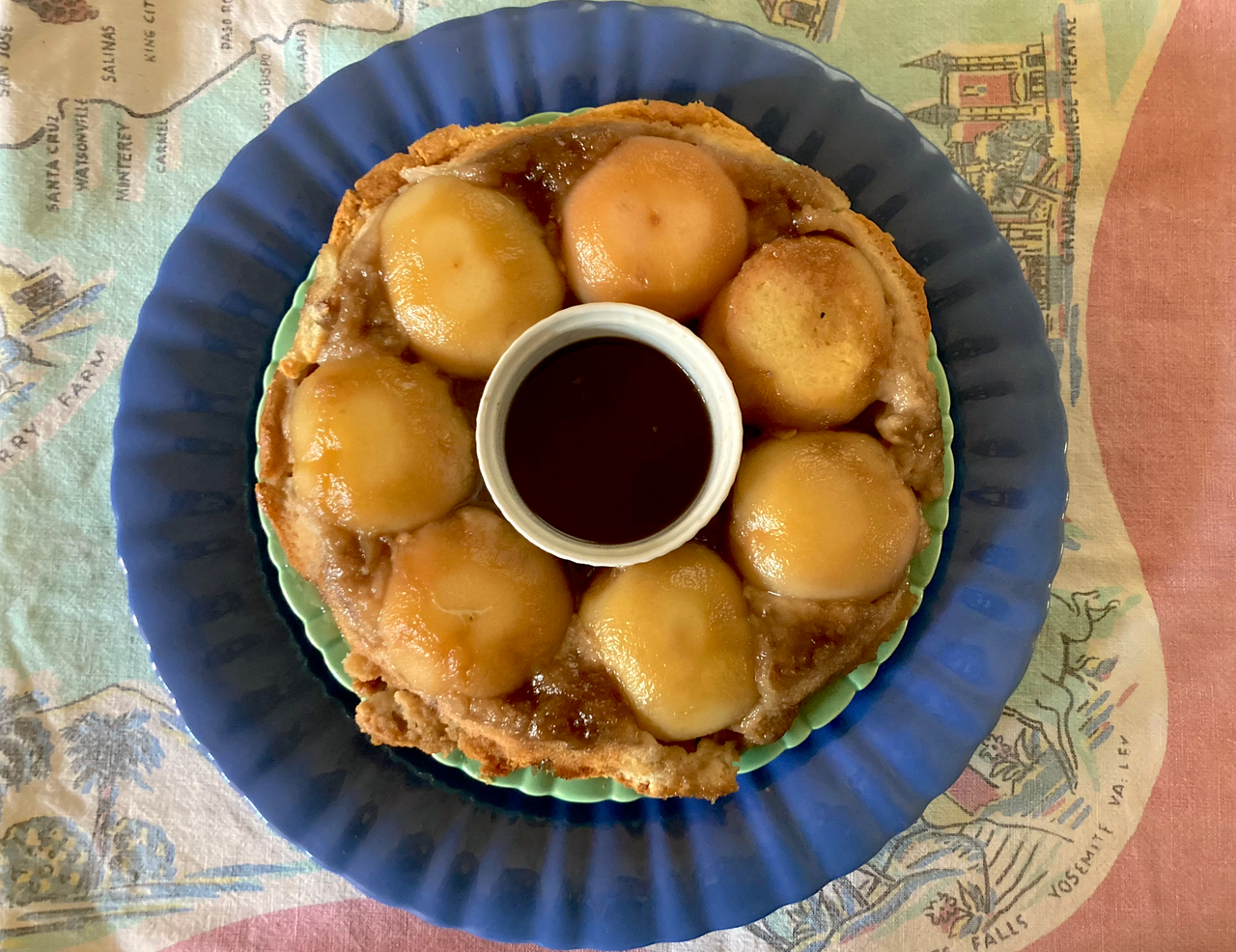


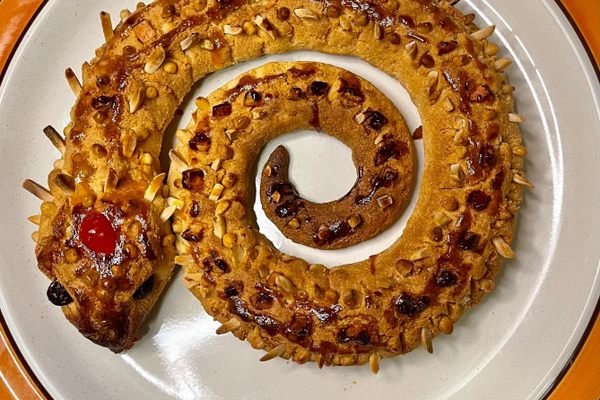
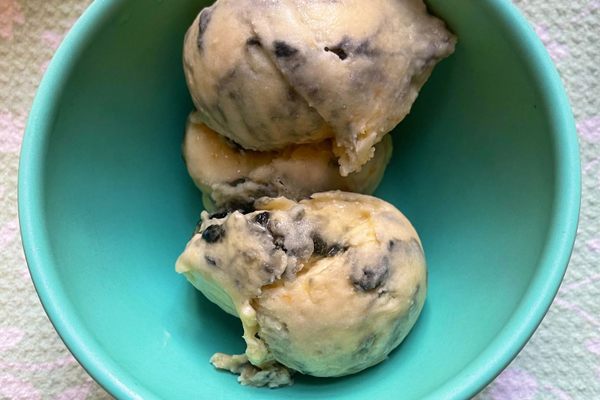

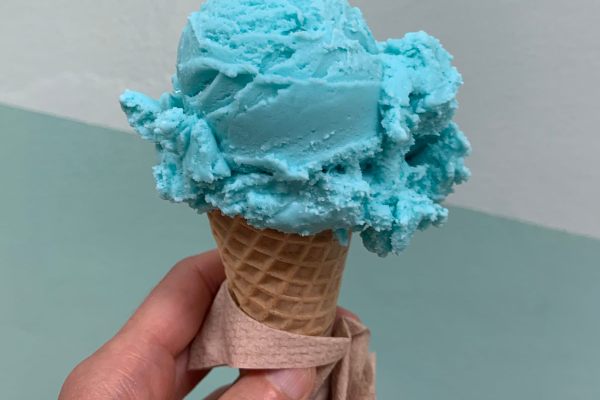


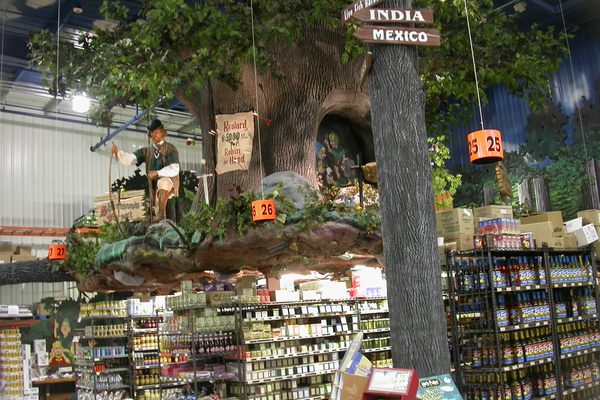





Follow us on Twitter to get the latest on the world's hidden wonders.
Like us on Facebook to get the latest on the world's hidden wonders.
Follow us on Twitter Like us on Facebook